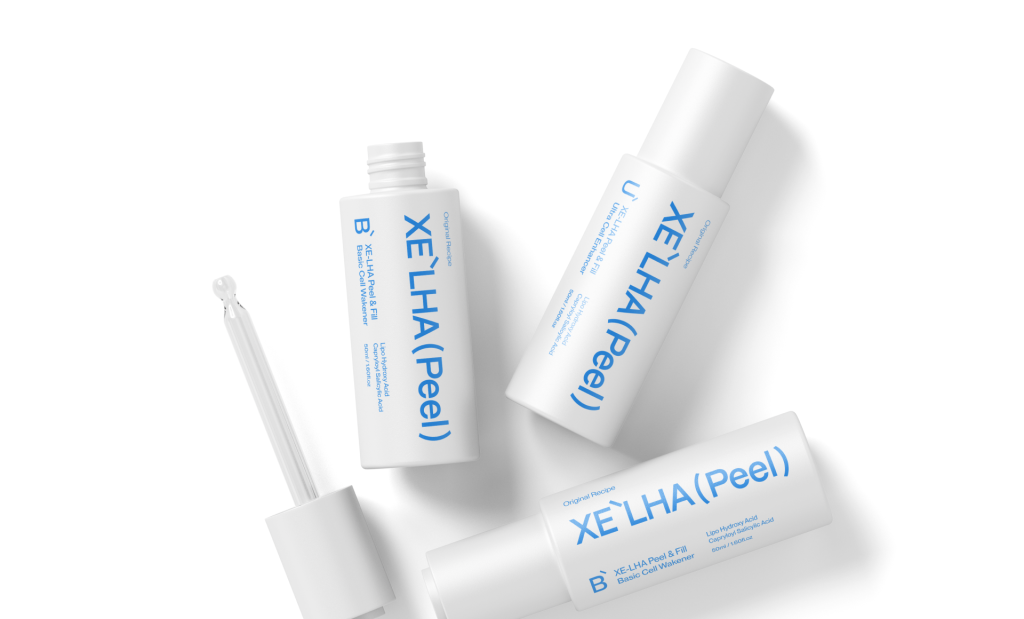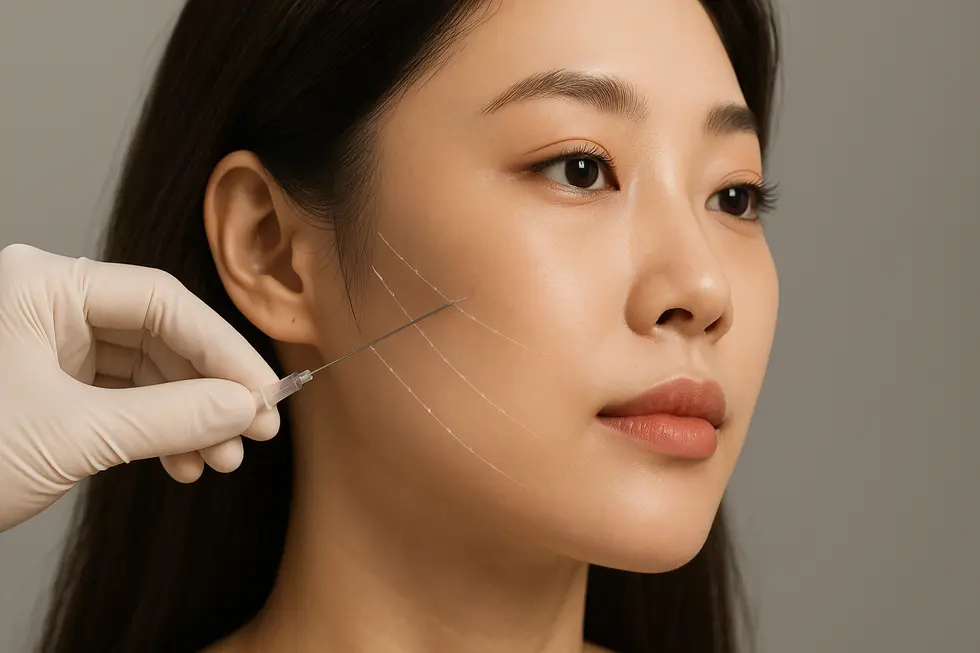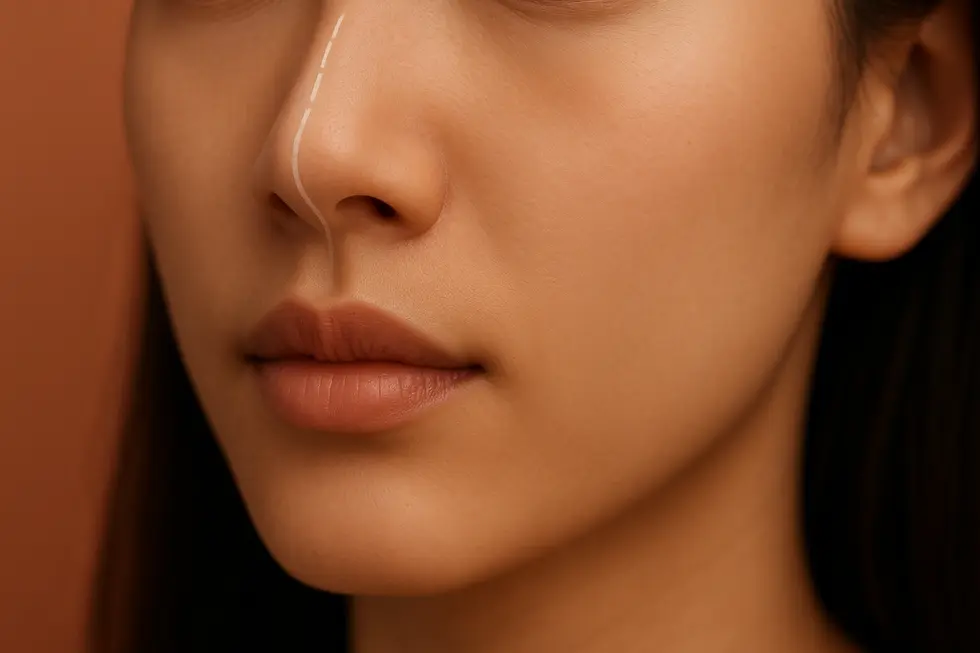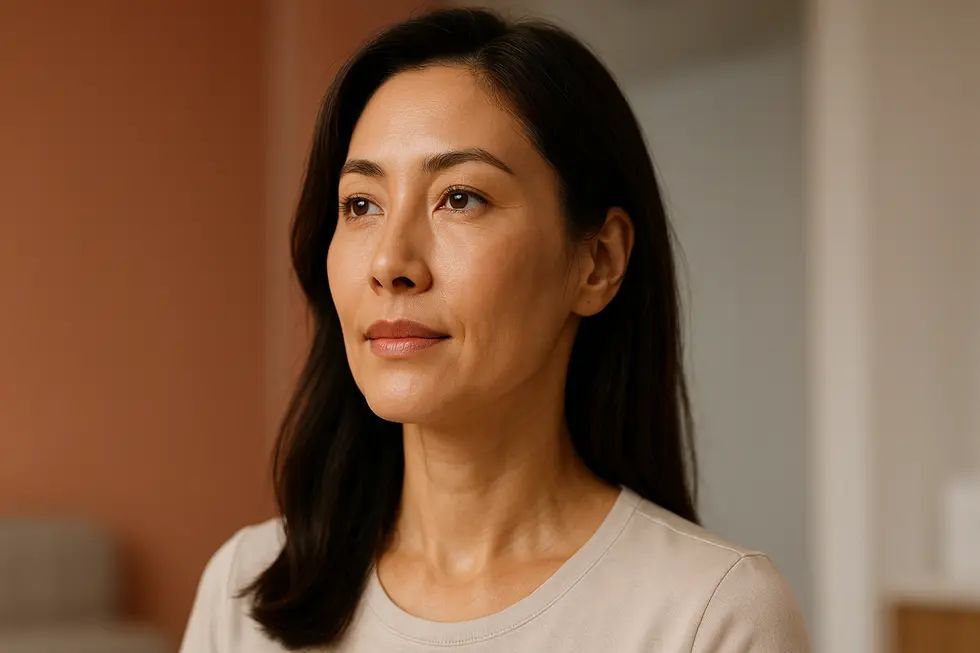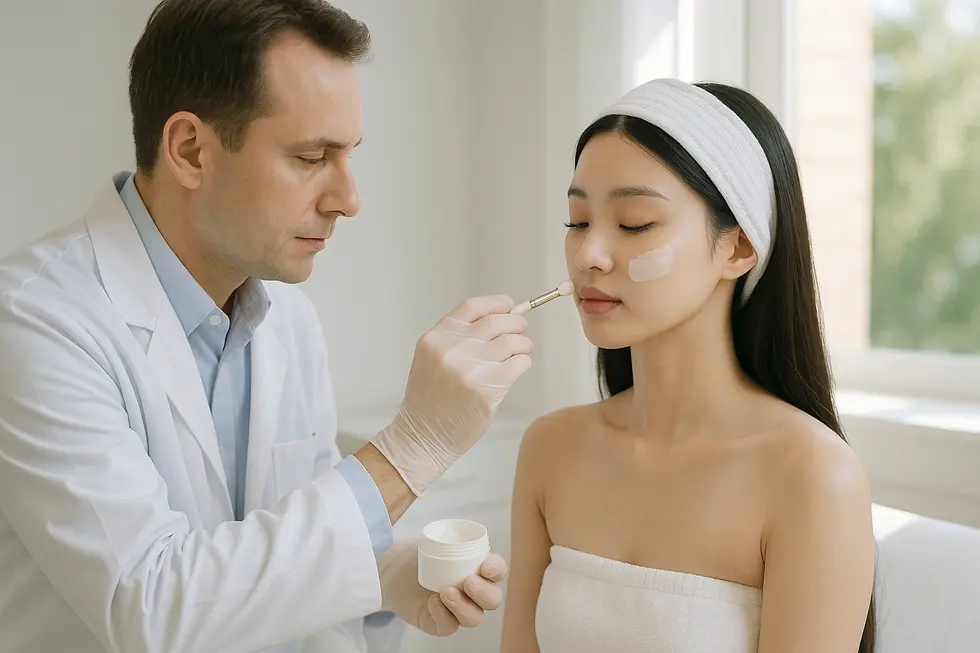
Have you ever struggled with stubborn acne that just won’t go away, or noticed those rough, patchy spots showing up from years of sun exposure? I know I have! It feels like you’ve tried everything, right? 😊 That’s why I was so intrigued when I first learned about Photodynamic Therapy, or PDT for short. It sounded a bit sci-fi, using light and a special drug, but the results I read about were really promising for all sorts of skin issues, from frustrating breakouts to sneaky pre-cancers.
In this post, we’re going to dive deep into the world of PDT. We’ll explore exactly what it is, how it works its magic, what kinds of skin problems it can help with, and importantly, what you can expect during and after treatment. My goal is to give you a clear, easy-to-understand picture so you can see if PDT might be a good option for your skin journey.
Contents
What is Photodynamic Therapy (PDT) and How Does it Work? ✨
At its core, PDT is a clever two-step process that targets specific skin cells. Think of it like activating a precise treatment using light!
First, a special cream or solution containing a photosensitizing agent is applied to the skin area needing treatment. The most common ones you might hear about are Aminolevulinic Acid (ALA) or Methyl Aminolevulinate (MAL). These agents are designed to be absorbed preferentially by certain cells – like rapidly growing abnormal cells (in pre-cancers or some cancers), overactive oil glands (for acne), or even certain bacteria.
The photosensitizing agent needs time to be absorbed by the target cells. This incubation period can vary significantly, from as little as 30 minutes to several hours, depending on the specific agent used and the condition being treated.
After the incubation period, the treated area is exposed to a specific wavelength of light. This could be blue light, red light, or even sometimes Intense Pulsed Light (IPL). This light energy “activates” the photosensitizing agent that has been absorbed by the target cells.
When activated, the photosensitizer produces a type of oxygen molecule called a reactive oxygen species (ROS), primarily singlet oxygen. These ROS are highly destructive to the cells that absorbed the photosensitizer. They essentially cause targeted damage and destruction, while leaving the surrounding normal skin cells relatively unharmed. It’s like a guided missile system for problematic cells!
This process also helps reduce inflammation and can even stimulate the production of new collagen, which is fantastic for skin rejuvenation.
What Skin Conditions Can PDT Treat? 🤔
PDT is incredibly versatile and used for a range of dermatological issues. Its ability to selectively target different cell types makes it effective for several frustrating conditions.
One of the most common uses is for acne. For those dealing with moderate to severe inflammatory or cystic acne, especially if other treatments haven’t worked well, PDT can be a game-changer. It tackles acne on multiple fronts: it helps kill the *Cutibacterium acnes* bacteria (the main culprit in breakouts), it shrinks the sebaceous glands which produce excess oil (sebum), and it reduces the inflammation that causes red, painful pimples. Many people see significant improvement, and often, the results can be quite long-lasting after a series of sessions (typically 3-5). It’s certainly an option worth discussing with your dermatologist if acne is a persistent issue for you.
PDT is also widely used and highly effective for treating actinic keratoses (AKs). These are rough, scaly patches that are considered precancerous lesions caused by long-term sun exposure. Treating AKs with PDT not only clears the visible lesions but also treats subclinical (not yet visible) ones, helping to prevent them from developing into squamous cell carcinoma. It often leaves the skin looking and feeling much healthier overall.
Speaking of sun damage, PDT is excellent for general sun damage and skin rejuvenation. It can improve skin texture, reduce fine lines, minimize pore size, and fade blotchy pigmentation. This happens because it removes damaged cells and encourages the skin to produce new collagen, giving you a smoother, more even complexion. I mean, who doesn’t want that?!
Beyond these, PDT is also used for conditions like rosacea (to reduce redness and bumps), sebaceous gland hyperplasia (enlarged oil glands), and certain superficial skin cancers. It’s a powerful tool in a dermatologist’s arsenal!
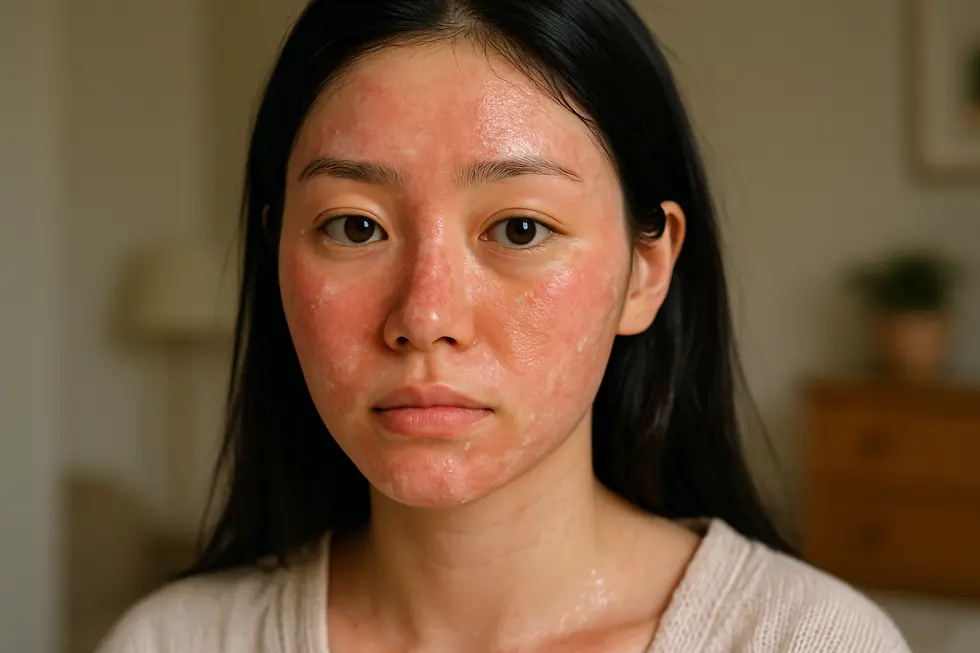
How Much Does PDT Cost? 💰 (And What Influences the Price)
Okay, let’s talk numbers. This is often one of the first things we think about when considering any cosmetic or medical procedure, isn’t it? 😊 The cost of PDT can vary quite a bit depending on several factors.
Based on the information I found regarding the Korean market (like on sites such as yeoshin.co.kr), a single session of PDT for acne can range roughly from ₩50,000 to ₩200,000 Korean Won. This is a pretty wide range, reflecting differences in clinics, the specific type of PDT performed (e.g., using ALA vs. a “mild” version), and the size of the treatment area.
Here’s a look at what can influence the cost:
- Type of Photosensitizer: Some agents might be more expensive than others.
- Area Size: Treating a full face will cost more than treating just the forehead or a specific spot.
- Clinic Location & Reputation: Prices can vary significantly between different clinics and cities.
- Number of Sessions: Often, clinics offer package deals for multiple sessions (e.g., 3 sessions for a set price), which can be more cost-effective per session than paying individually.
- Combining Treatments: Sometimes PDT is combined with other treatments like extractions or peels, which adds to the overall cost.
It’s really important to remember that costs vary globally, and the prices in South Korea are just one example. For an accurate quote tailored to your specific needs and location, a consultation with a local dermatologist is essential!
Possible Side Effects and Who is PDT For? 🩹👩💼
Like any medical procedure, PDT has potential side effects, although for many people they are manageable and temporary. Knowing what to expect helps you prepare!
During the light activation, it’s very common to feel stinging, burning, or itching. The intensity varies from person to person and depends on the area being treated and the condition. It might feel a bit uncomfortable, but it’s usually tolerable.
After the treatment, the most common side effects are redness, swelling, peeling, dryness, and crusting in the treated area. This is a normal part of the healing process, as the damaged cells are shed. It can look and feel a bit like a moderate to severe sunburn. These effects typically last several days to a week. Sometimes, the skin might look worse before it looks better, which can be a bit surprising if you’re not prepared for it!
The most critical precaution after PDT is extreme photosensitivity. Your treated skin will be highly sensitive to *any* light – sunlight and even bright indoor lights – for 24 to 72 hours (depending on the photosensitizer used). Strict sun avoidance is mandatory during this time to prevent a severe burn-like reaction. Stay indoors, away from windows, and wear protective clothing if you must go outside briefly.
Less common side effects can include blistering, prolonged redness, and temporary changes in skin pigmentation. People with darker skin tones need careful assessment and tailored treatment parameters to minimize the risk of post-inflammatory hyperpigmentation.
So, who is PDT a good fit for? It’s often recommended for:
- People with moderate to severe acne that hasn’t responded well to other treatments.
- Individuals with multiple actinic keratoses or significant sun damage.
- Those looking for overall skin rejuvenation, improvement in texture, tone, and fine lines.
- Certain cases of rosacea or superficial skin cancers, as determined by a dermatologist.
A thorough consultation with a board-certified dermatologist is absolutely crucial before deciding on PDT. They can assess your skin type and condition, discuss risks and benefits based on your medical history, and determine if you are a suitable candidate. Always inform them about any medications you are taking, as some can increase photosensitivity!

The PDT Experience: During the Procedure and Crucial Aftercare ✨
What actually happens when you go in for a PDT session? Understanding the process can help ease any nerves you might have! 😊
First, the target area is usually cleaned and prepared. Then, the photosensitizing solution or cream is applied. This is the part that requires the incubation time we talked about – you’ll likely relax in the clinic for anywhere from 30 minutes to a few hours while the medication absorbs.
Once the incubation is complete, the light treatment begins. You’ll wear protective eyewear (those cool goggles!) to shield your eyes from the bright light. The light source is then directed at the treated area. As mentioned, you might feel warmth, tingling, itching, or a stinging/burning sensation during this phase. This sensation is usually more intense in areas with more sun damage or acne, as those areas have absorbed more of the photosensitizer. The light exposure typically lasts for several minutes.
After the light treatment, the area is usually cleaned again, and soothing creams or cool compresses might be applied.
Don’t schedule anything important immediately after your first session, as the discomfort and redness can be significant. Plan to go straight home and stay indoors!
Now, let’s talk about the absolute *most* important part: post-procedure care. This is where you play a crucial role in ensuring good results and minimizing side effects.
- Strict Light Avoidance: I cannot stress this enough! For the recommended period (usually 24-72 hours), you MUST avoid sunlight and bright indoor light. Stay inside, away from windows. If you have to venture out, wear a wide-brimmed hat, use a high SPF (50+) broad-spectrum physical sunscreen (containing zinc oxide or titanium dioxide), and wear protective clothing. Think “vampire lifestyle” for a couple of days!
- Gentle Skincare: Your skin will be sensitive. Use only gentle cleansers and moisturizers recommended by your dermatologist. Avoid harsh products like retinoids, exfoliants, alpha-hydroxy acids (AHAs), or beta-hydroxy acids (BHAs) until your skin is fully healed.
- Healing Process: Redness, swelling, and peeling are normal. Let your skin heal naturally. Do NOT pick at crusts or peeling skin, as this can lead to scarring or infection. Cool compresses can help soothe discomfort and reduce swelling.
- Long-Term Maintenance: Once healed, continue to use good sun protection daily to maintain your results and prevent future damage. Depending on the condition treated, your dermatologist might recommend follow-up sessions or a maintenance plan.
Following these aftercare instructions diligently is key to a successful outcome with PDT.
📝 Summary
Okay, let’s quickly recap everything we’ve learned about Photodynamic Therapy!
- PDT Explained: It’s a two-step treatment using a photosensitizing drug and light to target and destroy specific skin cells and tissues.
- Versatile Treatment: Highly effective for treating acne, precancerous lesions (AKs), sun damage, and can significantly rejuvenate the skin.
- Cost Considerations: Prices vary widely based on location, clinic, area treated, and number of sessions, often ranging from ₩50,000 to ₩200,000+ per session in the Korean market.
- Manageable Side Effects: Expect temporary redness, swelling, and peeling, but strict sun avoidance post-treatment is CRITICAL due to photosensitivity.
- Who It Helps: Great for stubborn acne, significant sun damage, AKs, and those seeking skin rejuvenation, suitable for various skin types with proper adjustments.
- Aftercare is Key: Diligent sun protection and gentle skincare post-treatment are essential for healing and maintaining results.
PDT offers a unique approach to tackling several common and sometimes challenging skin conditions. It’s not a quick fix, often requiring multiple sessions and careful post-treatment care, but the potential benefits for clearer, healthier skin can be significant.
PDT Key Takeaways
Frequently Asked Questions ❓
Thinking about PDT for yourself? I hope this guide gave you a clear overview of what it entails! Remember, the best step is always to chat with a qualified dermatologist. They can assess your unique skin needs and help you decide if PDT is the right path for you. If you have more questions or want to share your own experience, feel free to leave a comment below! 😊

